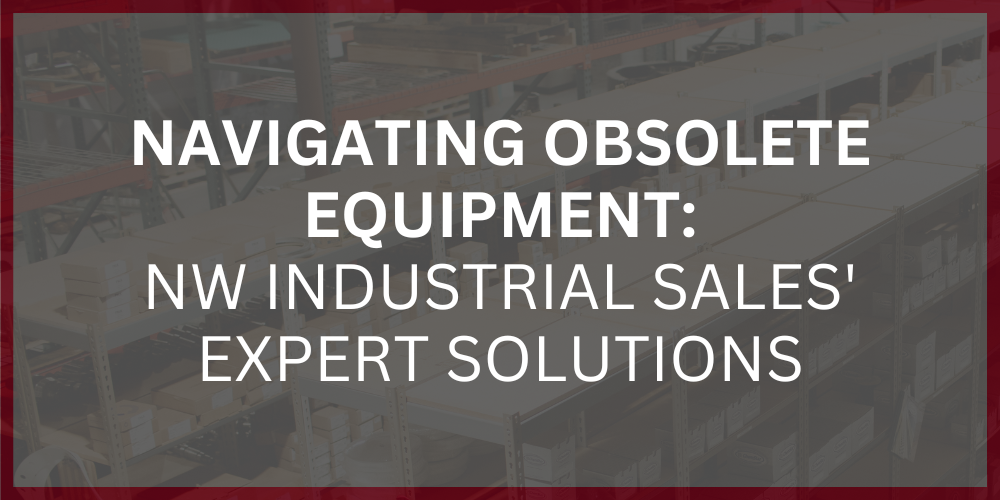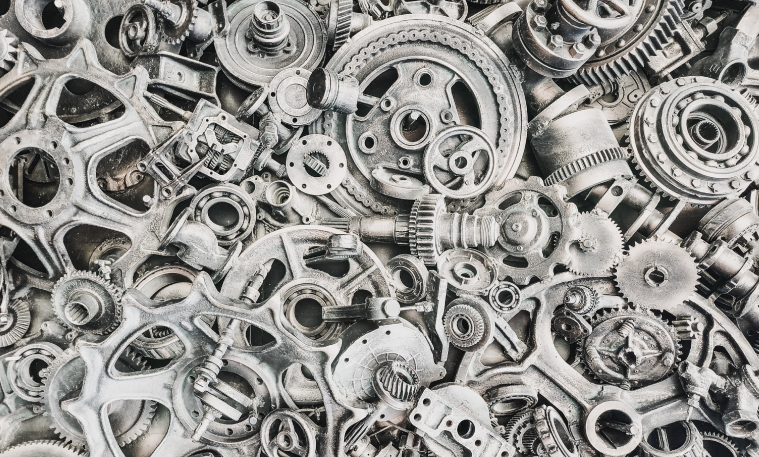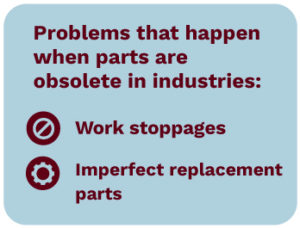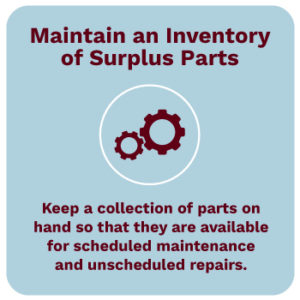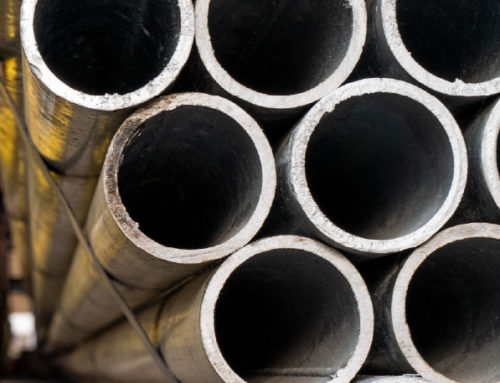Innovations in some industries occur at an increasingly rapid pace. For example, equipment producers develop new machinery that uses more recent technology. This dynamic causes problems for industrial operations that rely on obsolete equipment parts and products.
The machinery may still perform well, meeting all the requirements necessary for profitable operations, but maintenance can be challenging. This is usually due to the lack of proper replacement parts.
Problems that happen when parts are obsolete in industries.
Work stoppages: Older machinery relies on obsolete equipment parts and products that manufacturers no longer produce. Problems that happen when parts are obsolete in industries include shutdowns and complicated maintenance processes.
The need for unexpected repairs causes operations to slow or completely shut down while maintenance personnel seek a source for a necessary part. Such stoppages could lead to stranded inventory, lost profits, and excessive worker downtime. For companies that rely on a steady flow of production, this can be nothing short of a crisis.
Imperfect replacement parts: If a part is too difficult to source, repair technicians may end up using parts that aren’t from the original equipment manufacturer (OEM), meaning they aren’t specifically designed for the equipment and may lead to compromises in safety and efficiency.
Investing in new equipment may not be feasible for a company, so other solutions are necessary to avoid the pitfalls of obsolete parts.
Solutions for Obsolete Parts & Products
How can you avoid the pitfalls of running an industrial operation with equipment that requires obsolete parts? Here are two successful ways to do it.
Maintain an Inventory of Surplus Parts
When companies are still using obsolete equipment and parts, the costs for maintenance, repairs, and replacements increase dramatically. Additionally, the downtime needed to find a technician or a replacement part can be significant. These issues however can be mediated by creating a solid plan for obsolescence.
One option is to keep a collection of parts on hand so that they are available for scheduled maintenance and unscheduled repairs. Even if you do not have a complete inventory of obsolete parts, you can keep a surplus of commonly used components.
When you partner with NW Industrial Sales, LLC you also have access to a vast network of parts and product manufacturers as well as expert maintenance services. As a result, we can also quickly and expertly provide our clients with the industrial services they need.
Locate a Reliable Third-Party Supplier
Another solution is to find an obsolete parts distributor that can supply the components you need for older equipment and systems in your industry. This option solves the issues of storage and investing in parts that might never be used.
You can combine onsite parts inventory with a third-party supplier. For example, at NW Industrial Sales, LLC, we offer a wide range of industrial parts, such as an inventory of Falk gearbox parts.
With this type of source for surplus gearboxes and other obsolete parts, you can create a complete parts management program. With good planning, you can keep the parts you need on hand to avoid shutdowns and quickly source any other necessary components from your third-party industrial supplier.
What’s more, this type of inventory plan is actually good for the environment because it reduces waste by utilizing parts and machinery that would otherwise end up in a landfill.
Contact Our Obsolete Parts Distributor
Not all industrial supply companies are the same. You need to work with a supplier who deals in OEM parts to be confident about the quality.
At NW Industrial Sales, LLC, we bring years of industry experience. We know that off-brand parts don’t usually perform as expected, so we focus on providing the best OEM components for your machinery. We offer high-quality components from respected names.
View our inventory of reducers, parts, obsolete units, and more to find the components you need to keep your operation humming. You can also contact us to see how we can help with your parts management plans.
